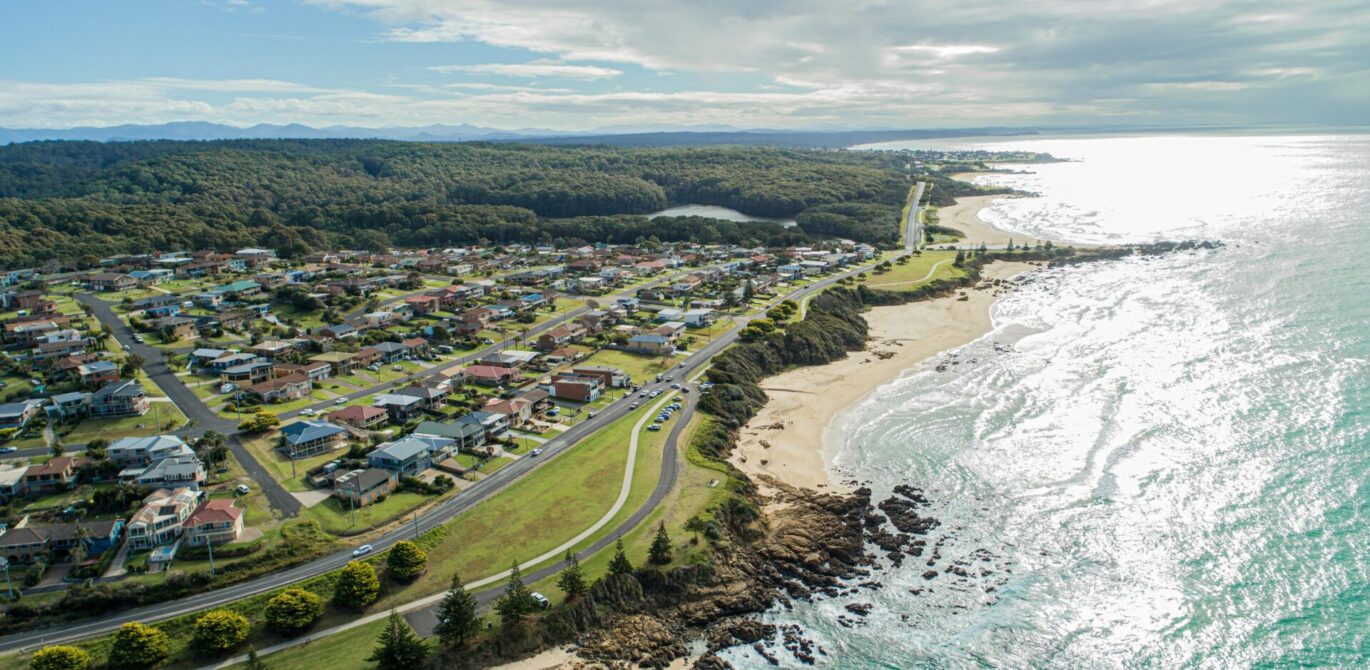National home prices remain 4.73% higher than this time last year, despite a 0.17% decline in home values through December.
According to CoreLogic statistics, this was the first monthly decline in the Home Value Index (HVI) in almost two years and the downturn is expected to be short-lived.
Despite December’s figures resulting in a -0.1% quarterly change, Australia’s property market enjoyed a surprisingly strong and resilient period of growth between February 2023 and October 2024.
Compared to March 2020, national home values are 45.1% higher.
The December Decline
Capital city areas led the decline, falling by 0.25% over December.
Regional areas were more resilient, rising by 0.03%. Canberra (-0.61%) and Melbourne (-0.53%) recorded the sharpest drops in prices, with prices also down in Sydney (-0.29%), Brisbane (-0.04%), Adelaide (-0.18%) and Darwin (-0.25%) in December.
Perth (+0.39%) has continued its run as the best performing capital city, while Hobart (+0.03%) held relatively steady.
Prices across Australia’s regions were mostly stable in December, with the exception of regional South Australia (+0.6%).
Both houses and units saw their respective national medians fall by 0.17% in December, to reach $868,000 and $653,000, respectively.
Houses and units have moved at a similar speed over the past year, up 4.8% and 4.6%, respectively.
Three Capital Cities Down for the Year
Three of the capitals recorded a decline in values over the year; Melbourne (-3.0%), Hobart (-0.6%) and the ACT (-0.4%).
At the other end of the spectrum, Perth values surged 19.1% over the year, Adelaide was up 13.1% and Brisbane values increased 11.2%.
Regional housing markets finished the year on a stronger note, with values up 6.0% over the year, compared with a 4.5% rise across the combined capital index.
The median house price in Australia’s combined capital cities is now $1,008,719, the median unit price sitting at $687,670. The median dwelling value in Australia’s combined regional areas is $657,652.
Where is the Growth?
Perth continues to stand out with a substantially higher rate of growth compared to any other region, up 0.7% over the month of December.
Adelaide (+0.6%), Brisbane (+0.5%) and the regional areas of South Australia (+1.2%), Western Australia (+0.9%) and Queensland (+0.4%) also show a consistently high rate of capital growth month-to-month.
Although the pace of gains has slowed a little, most regions are still recording value growth well below the highs of last year.
State By State
Melbourne
Melbourne property values have risen 8.4% since the onset of Covid, but are -6.4% below their peak of March 2022 taking into account the 0.7% fall in December.
According to expert commentary, Melbourne buyers have consistently enjoyed more choice relative to other markets, at the same time construction rates relative to population growth in Victoria have been mostly balanced compared to other parts of the country.
The result is that the Melbourne housing market has not performed as strongly as some other capitals over the last year or two.
Sydney
The pace of Sydney property price growth has slowed significantly over the last few months, but despite the slow down, Sydney house prices have risen 27.7% since the onset of Covid, that includes the -0.6% decline in December.
The Sydney unit market has reached new highs roughly matching house price growth over the year.
Brisbane
Brisbane’s housing market has skyrocketed since the pandemic with 67.7% trough to peak growth, and is currently sits at a new peak price.
Brisbane remains one of the strongest performing markets over the past year and the numbers indicate that supply is struggling to keep up with demand.
Adelaide
The Adelaide property market remains one of the country’s top performing markets, rising for the eight consecutive quarter.
The pace of growth remains high and well above the historical average as low stock levels intensify competition.
The comparative affordability of the city’s homes saw prices defy the significant increase in interest rates since May 2022, but according to statistics, this affordability gap is beginning to narrow.
CoreLogic data shows Adelaide values recorded a COVID-19 “trough to peak” growth of 72.1 per cent.
Perth
Perth’s housing market continues to stand out nationally remaining the strongest market in the country for monthly and annual home price growth.
According to experts this looks to be a market correction after Perth’s housing values remained flat for the majority of the last decade. Over the last 16 months, house and unit values in Perth enjoyed their most significant increases and are currently at a new peak.
The relative affordability of the city’s homes, population growth, and tight rental markets are also supporting home values.
Hobart
Hobart was the darling of speculative property investors and the best-performing property market in 2017- 2018.
After rising 26.7% over the Covid period, Hobart dwelling values fell and are still -12.6% below their peak of March 2022.
Hobart remains the weakest capital city market when comparing annual price growth, as well as the change from peak, but prices rebounded slightly last month.
Darwin
Darwin remains the most affordable capital city to purchase a house.
The city’s famously relaxed and laid-back lifestyle as well as the low-density population were a bonus in the post-pandemic era and drove interest in Darwin property.
After rising 24.8% over the Covid period, Darwin’s home values fell 6.4% after peaking in May 2014 and prices are still -3.4% over the last 10 years.
Canberra
Home prices in Canberra fell again in December, and are down -0.4% from their December 2023 levels.
Overall Canberra’s median house prices have recorded 30.3% growth since the beginning of Covid but are still 6.8% below their peak in May 2022.
Want to know more about what’s happening to prices in your neighbourhood? Contact an Elders expert in your region here.
